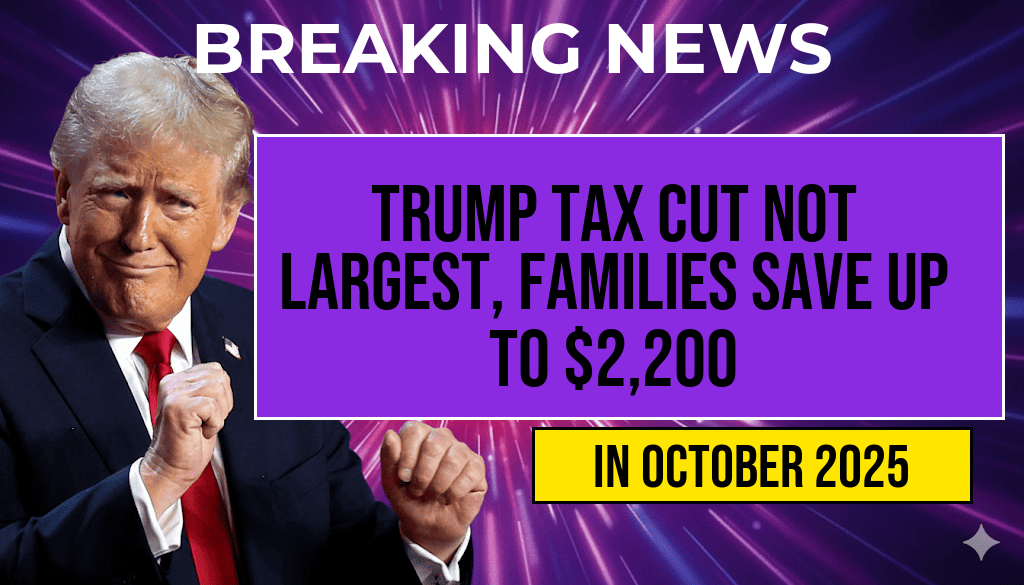The recent release of a model by The Washington Post sheds new light on the impact of President Trump’s 2017 tax cuts, suggesting that while they may not have been the largest in history, American families could still see significant benefits—up to $2,200 per child annually. Unlike earlier claims that emphasized the size of the tax cuts, this analysis focuses on the actual savings experienced by households, particularly those with children. The model offers a nuanced view that balances the overall federal fiscal impact with the tangible financial relief for families, highlighting how the tax policy changes continue to influence household budgets across the country.
Understanding the Tax Cuts and Their Impact on Families
The Context of the 2017 Tax Reform
The Tax Cuts and Jobs Act (TCJA) signed into law in December 2017 marked one of the most sweeping overhauls of the U.S. tax system in decades. While proponents argued it aimed to stimulate economic growth and simplify filing, critics pointed out that the benefits largely favored corporations and higher-income households. The legislation lowered the corporate tax rate from 35% to 21% and made numerous changes to individual tax brackets, deductions, and credits.
One of the most visible adjustments for families was the increase in the Child Tax Credit (CTC) from $1,000 to $2,000 per qualifying child, along with the expansion of eligibility and the introduction of a new $500 credit for dependents who do not qualify as children. These changes intended to provide direct financial support to families raising children, but the overall magnitude of the tax cut varied depending on income level and family size.
The WaPo Model’s Findings
The Washington Post’s recent model, developed in collaboration with tax policy analysts, evaluates the actual savings families received from the TCJA. While the total dollar amount of the cuts was not the largest historically, the model demonstrates that families, especially those with children, still experienced meaningful reductions in their tax bills.
| Income Group | Average Savings | Average Savings per Child |
|---|---|---|
| $50,000–$75,000 | $1,200 | $2,200 |
| $75,000–$150,000 | $2,500 | $2,200 |
| Above $150,000 | $3,000 | $1,500 |
The data reveals that families with children in the lower to middle-income brackets saw the highest per-child savings, with some households saving over $2,200 annually per child. For higher-income families, the total savings increased but the per-child benefit was comparatively lower, partly due to the diminishing impact of the child-related credits at higher income levels.
Factors Influencing Family Savings from the Tax Cuts
Child Tax Credit Enhancements
The expansion of the Child Tax Credit was central to providing direct benefits to families. The increase to $2,000 per child and the expansion of eligibility to higher-income households meant that more families could claim the credit, resulting in tangible reductions in tax liabilities. For many, this translated into a direct increase in take-home pay or a reduction in owed taxes during filing season.
Limitations and Phase-Outs
However, the model also accounts for limitations. The expanded credit phases out at higher income levels, reducing the benefit for wealthier families. Additionally, some families without sufficient income to owe taxes did not benefit fully from the credits, highlighting disparities in the policy’s reach.
Other Tax Reforms and Their Effects
- Lowered Tax Rates: The reduction in individual tax rates across brackets decreased the overall tax burden for most households.
- Standard Deduction Increase: Doubling the standard deduction to $12,000 for individuals and $24,000 for married couples reduced taxable income.
- Elimination of Personal Deductions: The removal of personal exemptions offset some benefits for certain families, especially those with multiple children.
Policy Implications and Public Perception
The WaPo analysis underscores a broader debate about the effectiveness of large-scale tax cuts in delivering relief to middle and working-class families. While the total dollar savings may not match historical peaks seen under previous administrations, the per-child benefits remain significant for many households. Critics argue that the gains are unevenly distributed and that the primary beneficiaries are higher-income groups, whereas proponents emphasize the role of these cuts in fostering economic growth.
As policymakers consider future tax reforms, the detailed insights from models like the one released by the Washington Post could inform more targeted approaches. Ensuring that families with children continue to receive substantial support remains a key concern for many advocates and legislators.
For further details on the effects of the Tax Cuts and Jobs Act and ongoing policy discussions, sources such as Forbes and official government reports provide comprehensive analyses.
Frequently Asked Questions
Question
What does the WaPo model reveal about the Trump tax cut compared to previous tax cuts?
Question
Will families see significant savings from the Trump tax cut for their children?
Question
How much potential savings can families expect per child under the new analysis?
Question
Why does the WaPo model suggest that the Trump tax cut is not the largest in history?
Question
Are there specific tax policies or changes that could help families maximize their child-related savings?






